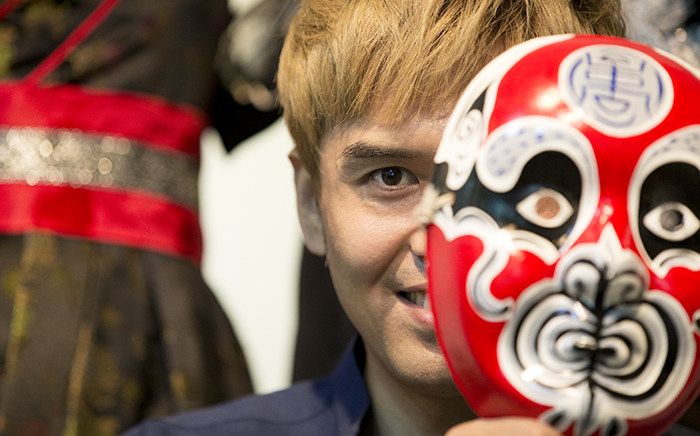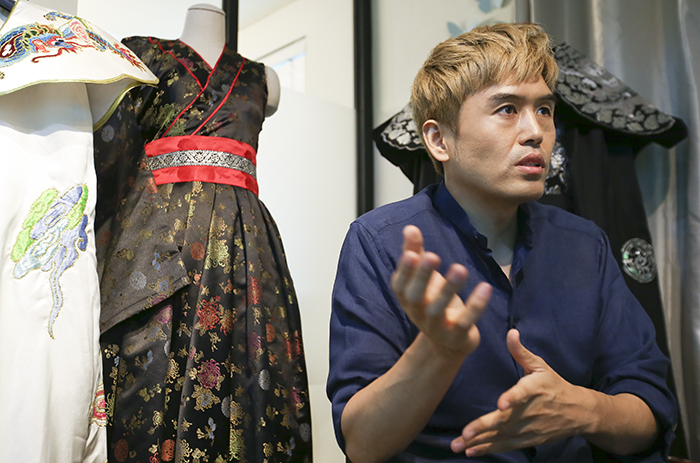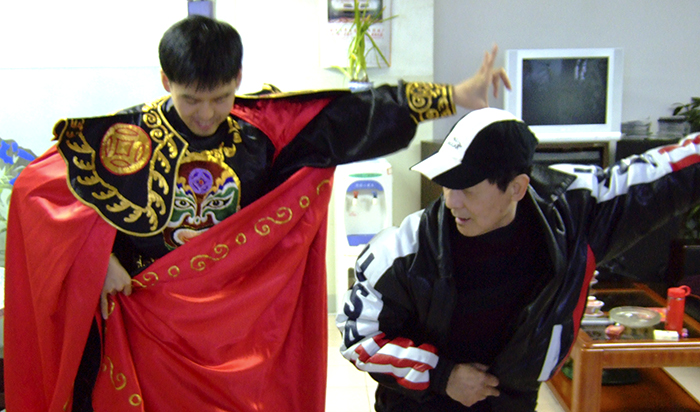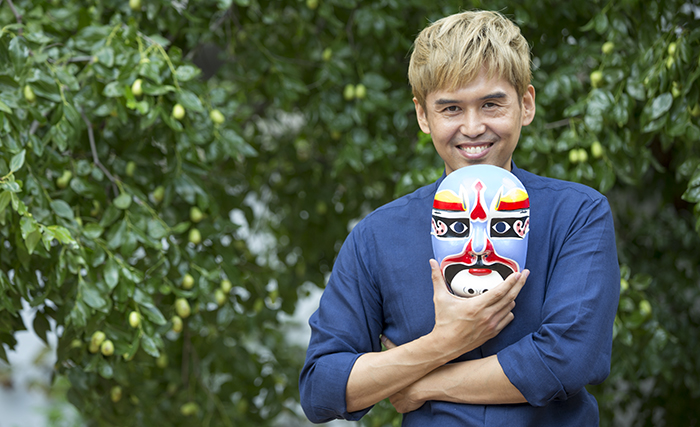
Since 2007, Korean bian lian performer Kim Woo-suk has acted as a bridge for cultural exchanges between Korea and China by adding Korean elements -- traditional costumes and stories -- to the Chinese art of face changing.
By Xu Aiying and Sohn JiAe
Photos = Kim Sunjoo
Seoul l Aug. 25, 2017
“I’d like to continue to bridge the traditions of Korea and China.”
Kim Woo-suk is one of the few Korean bian lian performers. Bian lian (變臉), or byeon geom in Korean (변검), is an ancient Chinese dramatic art that is part of the Sichuan opera school (천극, 川劇). Bian lian performers in brightly-colored costumes change from one mask, known as a geombo (검보, 臉譜), to another instantaneously with the movement of their head, hands or fan.
Kim is the one and only Korean bian lian performer who learned his art from Wang Daozheng (王道正) in China, often dubbed the "King of Bian Lian." This Korean face-changer has even produced his own show, “Palace" (궁), which brought to light the tragic life of Joseon King Yeonsan (r. 1494-1506) who ended up being dethroned in a coup. In his performance, Kim tells the story on stage, changing not only masks, but also traditional Hanbok costumes, as the story unfolds.
“Being Korean myself, I always want to show something 'Korean' on stage while I’m performing my face-changing art. I will continue to create shows that embrace things about both Korea and China. My goal is to reach out to audiences in not just the two nations, but across East Asia as a whole,” Kim said.
On Aug. 22, Kim sat down with Korea.net and talked about his face-changing theater art, at his studio in Yeonhui-dong, Seoul, showing some of the costumes and masks that he has used on stage.

Korean bian lian performer Kim Woo-suk talks about the art of face-changing, in his studio in Yeonhui-dong, Seoul, on Aug. 22.
- What made you get into bian lian?
Since I used to be a magician, I thought most types of magical tricks had the same roots. However, bian lian was different. I can’t say it's a form of sleight of hand. The bian lian that I saw in person in Sichuan was really moving. At that time, I was, like, I should learn this, for sure.
One of my acquaintances I met there introduced me to Master Wang Daozheng. For nearly seven years, I chased and begged him to teach me his skills. After seven years of pleading and begging, the master finally gave in and said, “Let’s get started.” I got to know the secrets hidden in the masks and costumes, which are often called “national secrets” in China, too.

Korean bian lian performer Kim Woo-suk (left) practices his skills with his teacher, Wang Daozheng, whom he calls 'Father.' (Kim Woo-suk)
- What’s the most difficult part of learning bian lian?
It’s difficult trying not to reveal the secrets behind the mask. I also found it challenging to learn and express moves that embrace Chinese sentiments. To learn such moves, I had to learn wushu (우슈) martial arts. I’m still learning it.
- Tell us about the charms of bian lian.
It’s not just to show magical tricks, but to come “close to” the audience. That’s the charm of the art. When I put on a show, I always try to approach people in the audience, changing masks quickly right in front of them.

Korean bian lian performer Kim Woo-suk says, ‘The Chinese art makes me think and move.’
- Tell us about how Korean and Chinese audiences react when they see you on stage.
Koreans who are not familiar with this genre are, like, “That's amazing and unique.” They seem to learn more about Chinese arts this way.
For Chinese audiences, they find it surprising that there’s a bian lian performer like me in Korea. They're interested in the Korean elements that my shows offer, in particular. This keen interest is encouraging and inspirational to me in making my own bian lian shows.
xuaiy@korea.kr